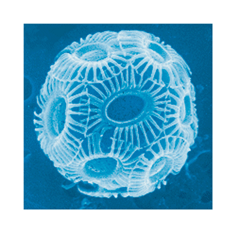Materials that naturally assemble themselves
Abstract
One of key aims of modern chemistry is to explore and exploit the phenomenal complexity of matter that seems to arise spontaneously within ambient environments like that of our planet. Biology, of course, is a ultimate manifestation of a universal chemical canon encompassing interactions both at the molecular and supramolecular level. Inorganic building blocks play a significant role in the self-organised assembly of many biological structures at various scale-lengths but the details of their chemical behaviour and interaction with organic compounds are still not well-understood. Stephen Mann of the University of Bristol is a pioneer in the area; his team is probing the ground rules for biomineralisation in the hope of applying them to the self-assembly of practical materials with complex hierarchical structures.


 Please wait while we load your content...
Please wait while we load your content...